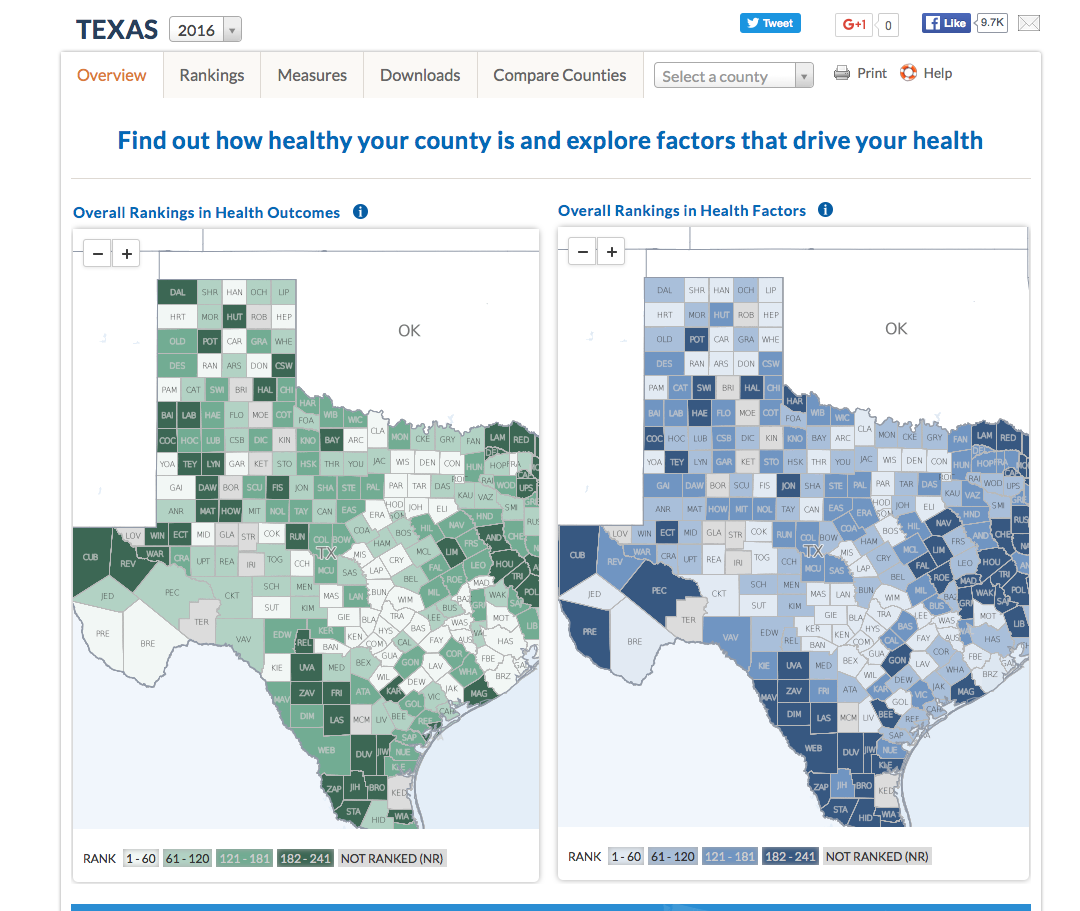When EHF’s research department combed through the newly-released County Health Rankings and Roadmaps, one conclusion became crystal clear — there is a clear divide between the health of urban and rural counties in Texas. EHF analyzed data for all 57 counties of the Episcopal Diocese of Texas. Below are the key takeaways from the rankings and how you can begin to use the rankings to inform strategies and activities to improve health in your community.
Five things you need to know:
1. What are the County Health Rankings anyway?
The nationwide County Health Rankings are compiled by researchers at the University of Wisconsin Population Health Institute and grade counties on all sorts of factors that determine the health of a community. The rankings include things like income level, obesity rates, access to healthy foods, teen births and much more. The rankings show that good health includes many factors beyond medical care.
“They also show us where we live does matter to our health,” said Mary Bennett, Texas Community Coach for the Rankings. “This data is designed to help you think differently about what affects health in a community.”
Virtually every county in the United States is ranked by two overall categories:
Health Outcomes — what health is like today.
Health Factors — what health is expected to be in the future.
“We hope these rankings prove to be a call to action for communities,” Bennett said. “The goal is for this data to start conversations about setting priorities to improve the health for everyone in a community.”
2. The 2016 Rankings show counties with big cities are graded much higher than rural counties.
Three counties within the Diocese were ranked in the top 10 in the state: Williamson, Fort Bend and Travis. In fact, the high-ranking counties within the Diocese are mostly concentrated in the areas around the cities of Austin and Houston. The low-ranking counties are mostly concentrated in East Texas. Jefferson and San Augustine counties ranked in the bottom 10 in Texas.
3. One year trends show declines in health within the Diocese
From 2015 to 2016, slightly more than half of counties in the Diocese saw a drop in their Health Outcomes rank. During that same time, 63% of counties in the Diocese saw a drop in their Health Factors rank.
4. Over the past five years, the Diocesan counties with the consistently lowest health rankings were located in East Texas.
The evidence is clear – rural counties fared far worse than urban and suburban counties. Low-ranking counties face challenges in all areas of health and have lower longevity and reduced quality of life. These counties also have lower rates of preventive services like diabetes monitoring and mammography screenings. They also have higher rates of preventive hospitalizations. But it’s much more than just medical care — the lowest ranked counties also have higher rates of poverty, lower incomes and high unemployment rates.
The health trends within the Diocese are similar to health trends across the country, says Bennett.
“Rural counties still have the highest rates of premature death and it’s getting worse,” Bennett said.
In fact, the rankings show while urban counties continue to show improvement, premature death rates are worsening in rural counties.
5. How can you use the rankings data to improve health in your community?
County Health Rankings identifies seven action steps as a guide for how you can use the data:
1. Work together
2. Assess needs and resources
3. Focus on what’s important
4. Choose effective policies and actions
5. Act on what’s important
6. Evaluate actions
7. Communicate
County Health Rankings also provides concrete and practical suggestions for specific groups in implementing these action steps:
Government officials
Nonprofits
Community members
EHF is here to help nonprofits, community groups, leaders and congregations use the county health ranking data to inform strategies or activities to improve community health.
Send us an email or give us a call at 832-807-2564 for more information.
